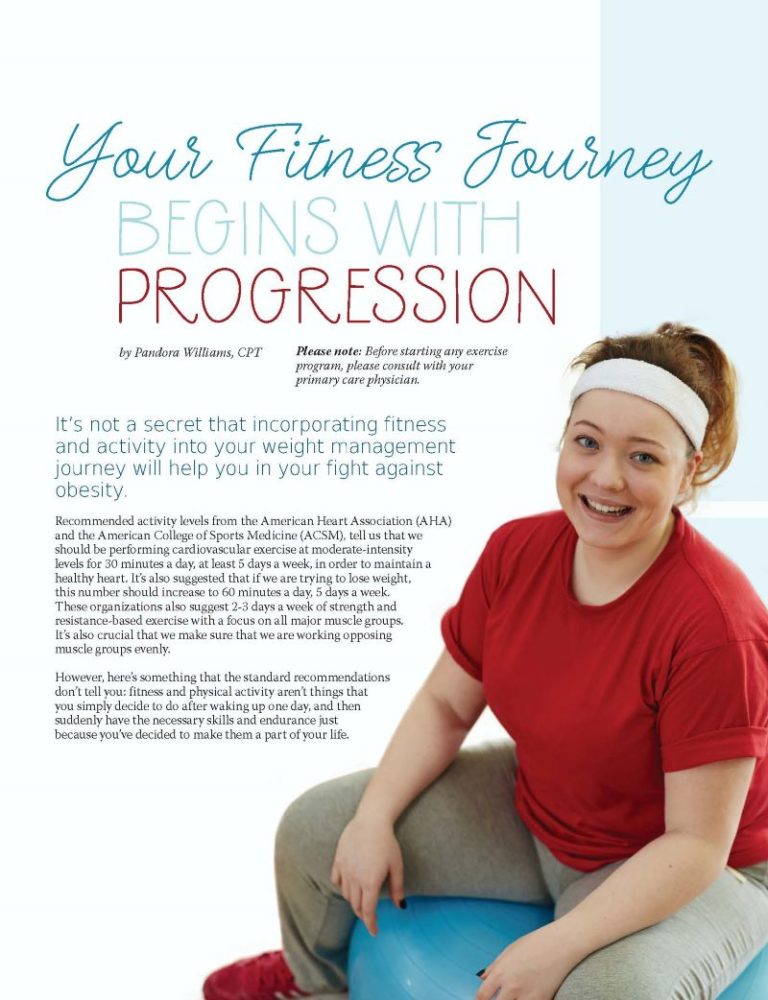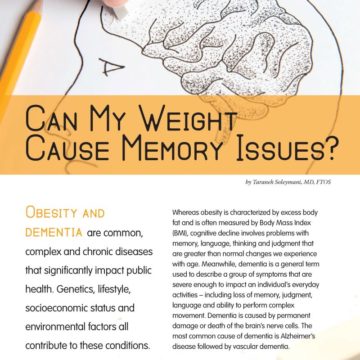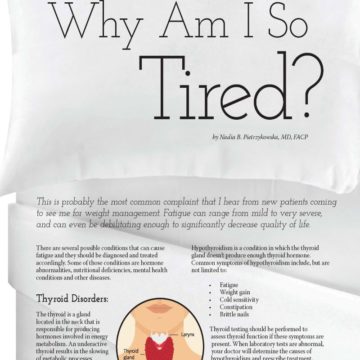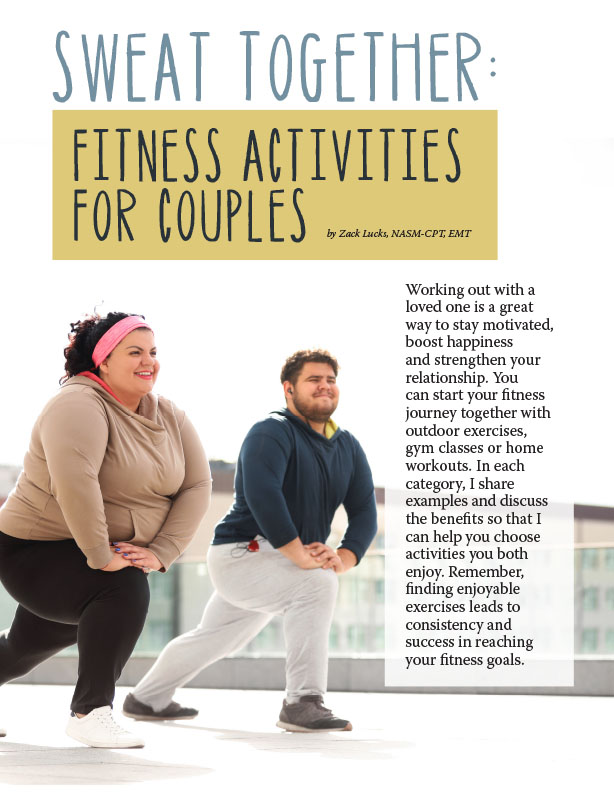Your Fitness Journey Begins with Progression


by Pandora Williams, CPT
Summer 2017
Please note: Before starting any exercise program, please consult with your primary care physician.
It’s not a secret that incorporating fitness and activity into your weight management journey will help you in your fight against obesity.
Recommended activity levels from the American Heart Association (AHA) and the American College of Sports Medicine (ACSM), tell us that we should be performing cardiovascular exercise at moderate-intensity levels for 30 minutes a day, at least 5 days a week, in order to maintain a healthy heart. It’s also suggested that if we are trying to lose weight, this number should increase to 60 minutes a day, 5 days a week. These organizations also suggest 2-3 days a week of strength and resistance-based exercise with a focus on all major muscle groups. It’s also crucial that we make sure that we are working opposing muscle groups evenly.
However, here’s something that the standard recommendations don’t tell you: fitness and physical activity aren’t things that you simply decide to do after waking up one day, and then suddenly have the necessary skills and endurance just because you’ve decided to make them a part of your life.
Progression is the key to everything.
We live in a society that is very impatient. It’s easy for us to get lost in the “instant gratification” philosophy that surrounds us and to get wrapped up in that “all or nothing” mentality. There is one simple word that can prevent us from falling into this fitness philosophy mindset: progression.
Fitness professionals are trained to teach you that exercise and activity should be safe and progressive. Standard recommendations are put in place to tell you what the average healthy adult should be doing each day. Those of us affected by obesity are not always the standard healthy adult, and that means that these parameters don’t always accurately represent where we are in our fitness journey.
They also don’t give us a realistic starting point.
Just like our journey with weight and health, nothing happens overnight – and the most effective approach to a healthier lifestyle is to figure out where you are with these key ideas:
- Set short-term, realistic goals
- Determine when/how those goals are or will be achieved
- Start working toward new ones
While standard exercise recommendations may suggest that you should be doing 60 minutes a day, 5 days a week of moderately intense cardiovascular exercise, those numbers aren’t going to work for you if you are just starting out on your fitness journey.
A smaller, more realistic goal might be:
- Exercising for 20 minutes a day, 3 days a week
- Adding another day once you’ve achieved that goal for 2-3 weeks
- Adding 5 minutes, etc. once you’ve worked your way up to 5 days a week
- Defining your “Moderate” is quintessential to your fitness journey
It’s important to remember that when we use an adjective like “moderate” to define exercise intensity, there is a lot of room for interpretation. That adjective can have many definitions when applied to different people. When defining our “moderate,” it is important to realize that there is a natural progression and we must identify our individual starting point.
Each of us is a unique individual. We all start our weight and fitness journeys at different places, skills, abilities, health issues, likes and dislikes. What is considered moderate activity level to each of us is defined by how our body responds and adapts to exercise, and the parameters for that change as we work toward progression in our own journey.
For example, 20 minutes of walking at a brisk pace might be considered moderately intense exercise for someone who is at the beginning of their fitness journey. As the duration of that activity progresses, their body adapts to the new level of activity and 60 minutes of walking at a brisk pace will be their new definition of moderate activity.
Exercise at its root is progressive. If we are consistent in our efforts with exercise, it can become obvious that we need to switch it up by keeping things challenging and reaching toward our personal “moderate.” When we apply this progression theory to cardiovascular exercise, we do this by altering a few different components such as:
- Duration
- Frequency
- Intensity
The same progression theory applies to strength and resistance exercises. If you’ve never lifted weights, you’re not going to start out doing 3 sets of 12-20 repetitions of bicep curls with 15-pound dumbbells, or chest presses with a 40-pound barbell. Your muscles aren’t going to have the strength and endurance for that yet. Instead, you’re going to need to start with light weights, low sets, low reps and then build-up slowly as your muscles adapt to this new activity.
If you don’t know the proper form of an exercise, it is important to ask for help to avoid the risk of personal injury. If what you are doing has a high potential risk for injury or overdoing it, you’re breaking one of the biggest rules when it comes to exercise and activity by not practicing safe and effective progression.
Proper form, technique and exercise execution should be your first priority.
As a personal trainer, my first responsibility is to make sure that my client’s exercise regimen is designed around their skills, ability and current fitness levels. We have the same responsibilities to ourselves when we begin our fitness journeys.
It’s also important to remember not to fall into that “instant gratification” mindset when approaching strength and resistance exercise. Before you buy into that latest online fitness challenge that encourages you to start out at 25 squats a day and build up to 200 squats a day in 30 days, ask yourself if you can perform 3 sets of 12 squats with proper form and technique. If the answer is “no” or even “I don’t know,” then that fitness challenge isn’t something for you. Those types of “challenges” do not encourage safe and effective progression.
Exercise and Activity are not a “one-size-fits-all” endeavor.
Fitness fits everyone, but it fits each of us differently. We need to make sure that we are not getting swept up in that “all or nothing” or “I want it now” mentality.
Just like our journey with weight and health, no matter what approach we take and what tools we decide to use to fight obesity, none of us will wake up the next day miraculously thin. Fitness works the same way. It’s a slow and steady journey with no clear destination or finish line. We must set small goals and hold ourselves to realistic expectations, and when we meet those goals, we must set new ones that continue to challenge us in our own journey.
About the Author:
Pandora Williams, CPT, is a transformation specialist who is an ISSA Certified Fitness Trainer and a Cooper Institute Approved Wellness Coach. She is also a motivational speaker and author of “Desperately Seeking Slender” and serves on the OAC’s Weight Bias Task Force and National Convention Exercise Committee.
by Yelena Kibasova Spring 2024 The fitness world is evolving, with new trends and innovations that promise…
Read Articleby Zack Lucks, NASM-CPT, EMT Winter 2024 Working out with a loved one is a great way…
Read Articleby Nina Crowley, PhD, RD (with Inspiration from Shawn Cochran) Winter 2024 Dating, no matter your age,…
Read Article









